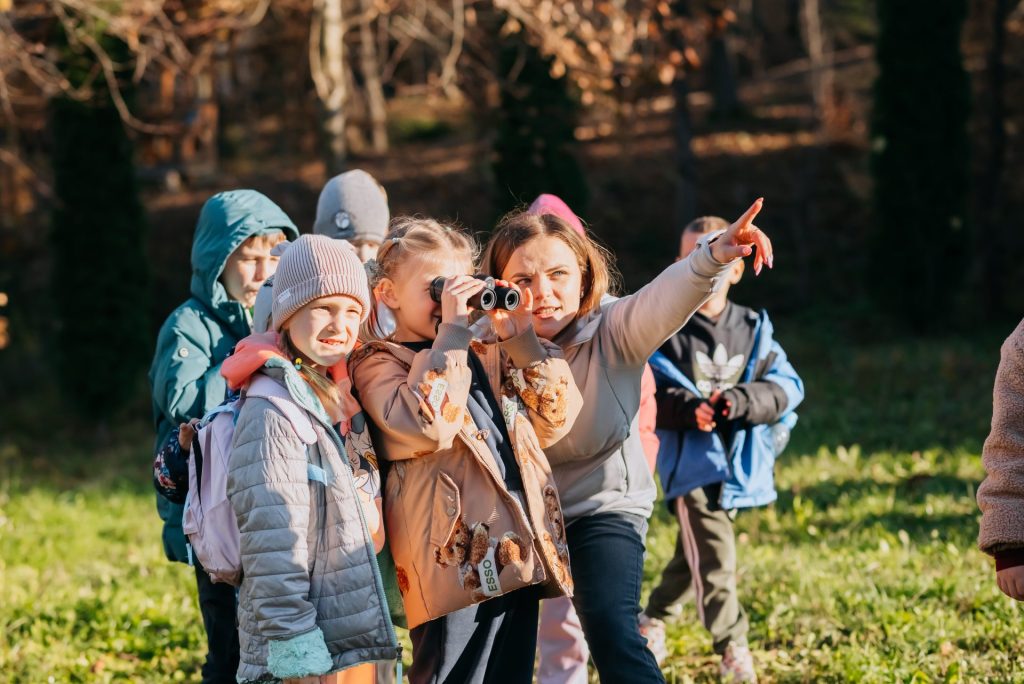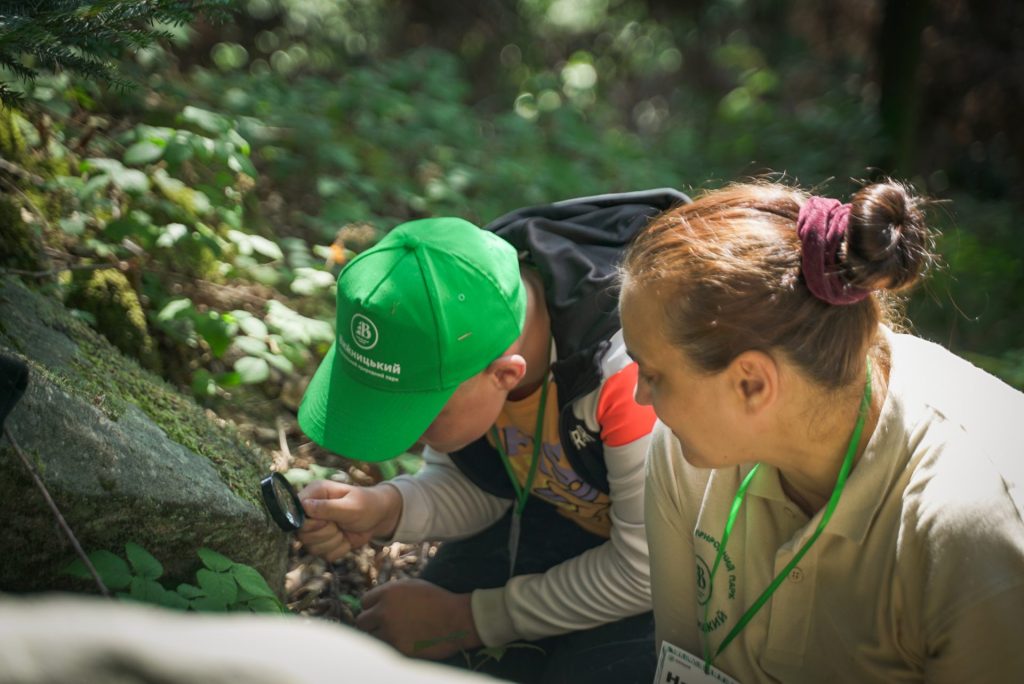5 ideas for an effective eco-education class
Throughout the year, the Frankfurt Zoological Society’s eco-education team worked with the protected areas to develop programs that would immerse visitors in nature. Employees of the institutions were trained in interpretation, developed training programs, and tested them with the coordinators of the FZS’s eco-education department, Hanna Kuzio and Lucy Fleischauer.
Interpretive programs have their own methodology and structure. They help visitors to establish contact with nature. To develop such programs, environmental educators can involve interested employees of various PAs departments, such as scientific, recreational.
We have collected in this material bright ideas shared by eco-educators of the protected areas:
1. To introduce nature, you don’t need to know everything
When the environmental education department works together with the scientific department, it is easier for them to formulate and conduct a program: environmental educators propose an idea, scientists fill the scenario with facts. However, it is possible to cope without the help of the scientific department.
This was the situation faced by the employees of the Hutsulshchyna National Park. They were conducting a program called “What Trees Are Silent About.” Their goal was to show children how healthy a forest is, how the forest ecosystem lives. The staff spent time on theoretical preparation, found activities to interest the children, and involved the recreation department in developing the program.
Visitors were taught how to calculate the age of a tree using a formula, and how to identify a tree using the PlantNet mobile app by its leaves, trunk, and flowers.In other words, the lesson does not aim to name all the trees in the forest, but to tell children about the forest as an ecosystem.
Life hack: If you have a lesson structure (a table with a step-by-step plan), you can organize any topic into it.We will post the best interpretive programs on the website, where you can see the structure.
2. One program — one topic
The peculiarity of interpretive programs is that the guide immerses visitors in one topic.
For example, the eco-educators of the Skolivski Beskydy National Nature Park told kids about virgin forests and old-growth forests.
They chose a small trail and interpreted everything that happened on it in relation to the topic: for example, when visitors came to a marked trial area, they were told why the trial area was laid out in old-growth forests.
3. Scientific approach works with children
In the Cheremoskyi National Nature Park, a botanist joined the tour. The program was about plants, and its culmination was the harvesting of plants for the herbarium on a special press. The children saw how science works in real life because they tried to make a herbarium themselves.
Life hack: recall the field tasks that students perform in practice and offer them to children (of course, taking into account the age category).
4. The method of nature interpretation works with different categories of visitors
At the Gorgany Nature Reserve, staff worked with a group of children from the Ivano-Frankivsk Training and Rehabilitation Center. An employee of the reserve researched what peculiarities there might be in working with children with intellectual disabilities and musculoskeletal disorders and chose the appropriate tasks. For example, realizing that visitors would not be able to walk along a steep path, the reserve staff showed the children a 3D tour.
At the same time, there were tasks available for the whole group – for example, the participants made postcards with plants they found on the lawn near the administrative building. This example showed that, based on the available resources, it is possible to engage different groups of people.
5. Nature can be explored without extreme
Nature exploration should take place in the open air. Depending on the level of training of the group, you can choose the difficulty of the route. Even the path next to the administrative building of the protected area is suitable for this, especially if your group is kids. Employees of the Vyzhnytskyi National Park showed that extreme tourism is not necessary for the program, the main thing is to dare to leave the building with children.
The programs presented by the staff of the PAs impressed our colleagues. Hanna Kuzio:
We have been training all year. And now the training has paid off: the protected areas have shown great programs, used the tools they had, and prepared thoroughly. These programs will be useful for the next season. We are very happy to respond and provide assistance if we see interest from eco-educators.
We will be glad if these ideas inspire you when preparing outdoor classes. We are currently working with PAs to develop eco-educational plans for the next year. Follow our news so you don’t miss anything!
News









